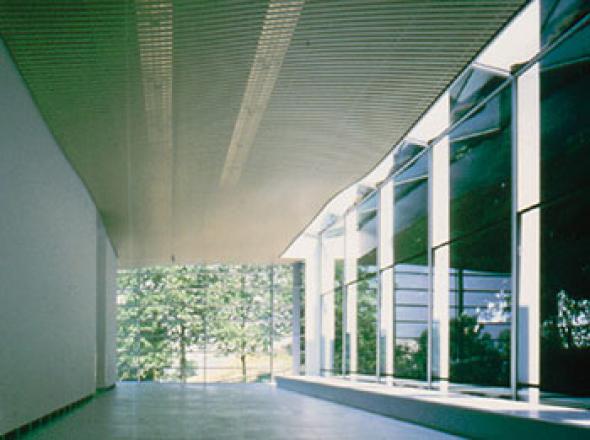Control Shift Paradigm
Sofie Rédelé saw waves at the Architecture Association's recent conference, but doubts they shook architecture's hallowed structures.
In The Structure of Scientific Revolutions, Thomas Kuhn defines the notion of the ‘paradigm’ as a scientific procedure with two main characteristics. Its appeal is big enough to attract a stable group of followers, luring them away from other competing methods of scientific activity, and many problems in the domain remained unsolved so that the adherents have the opportunity to untangle them, following the coherent set of rules that determines a given scientific model.
There is a widely shared sense that Western ways of knowing and representing have been irreversibly altered in recent times. Such transitions from one paradigm to another make up the usual pattern of evolution of a ‘mature’ science. This time however, there is little consensus over what this might mean, or what direction Western culture is taking. The turbulence seems to affect all sorts of domains: on many different scales, fixed values are being unsettled and a whole range of new answers proposed. But it is unclear which of these will help constitute a new paradigm and which will remain mere fashions.
One of the disciplines in transition is architecture and London's Architectural Association School of Architecture duly hosted a conference on 'paradigm shifts' last December. A promising panel of speakers was billed and topics included recent stylistic trends such as folding, wave-forms and non-Euclidean architecture as well as new architectural processes, from alternative forms of collaboration to the use of emerging technologies and techniques. In general, the event aimed to discuss how architecture should best respond to a perceived departure from the mechanistic worldview on which both classicism and modernism were based.
Charles Jencks, Brian Goodwin, Greg Lynn, Alejandro Zaera-Polo, Moshen Mostafavi, Brett Steele and Ben Van Berkel each explained what kind of architecture they regarded as adequate to meeting the contemporary demands of the discipline. What the practical implications were of Jencks's, Goodwin's and AA-chairman Mohsen Mostafavi's more theoretically laden propositions was not entirely clear; the more appealing part of the seminar kicked off with Greg Lynn’s presentation — an attempt at redefining what the generic for architecture could be in the light of reigning theories of capitalism and ecology. Lynn explained his vocabulary of the 'flexible surface' and showed samples of surface techniques in recent projects. However, his methods do seem to linger in the field of formal research. Alejandro Zaera-Polo put forward a more applied approach by reflecting on a series of processes and practices being used in the development of his project for the Yokohama International Port Terminal in Japan, while A.A.-graduate design tutor Brett Steele investigated design techniques and analytical, data-driven research tools for alternative forms of architectural and urban space (currently under scrutiny at the school's graduate design course, the Design Research Laboratory or DRL). Finally, the Dutch architect Van Berkel discussed techniques of mediation and the exchange of knowledge, elaborating on notions such as hybridisation and mediation already familiar from ‘MOVE’, the book he produced recently wtih Caroline Bos.
The discussion at the end of the conference made clear that most speakers are searching for new institutional forms and typologies. They also share an investment in finding strategies for selection and control in a mutating discourse. Yet, even after an animated debate on these and other subjects, the audience didn't seem convinced. The sceptical atmosphere was typified by one of the last questions: "What is new in all this?" To what extent are we heading for a new paradigm or is this emergence of blobby forms and continuous surfaces just another temporary fashion? The distinction seems blurred. The discourse and its spatial articulations are evolving in complex, alternating ways and this ‘culture of fashions’ is creating a network of ideas that in turn forms the paradigm.
Paradigm shift indeed...
Sofie Rédelé <sofie.redele AT advalvas.be>
Mute Books Orders
For Mute Books distribution contact Anagram Books
contact@anagrambooks.com
For online purchases visit anagrambooks.com








